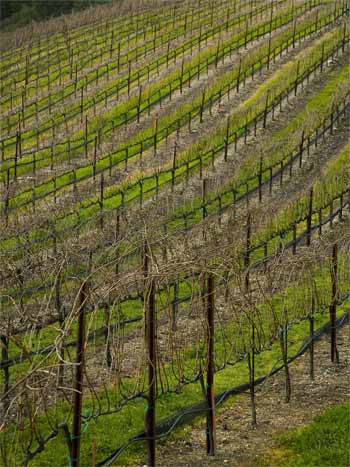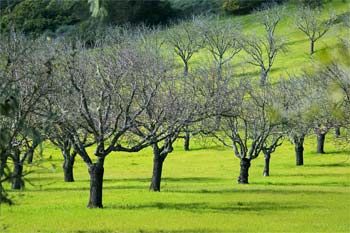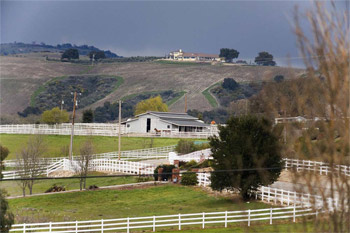200mm and 400mm are great focal lengths for landscapes
I have always enjoyed using a lens around 200mm for landscape photography. On the one hand, it’s relatively easy to hold steady hand held or with the aid of a monopod. On the other, it affords the easy opportunity of focusing on the essentials, cutting clutter.
I often find that selecting an elevated viewpoint and then composing to cut out the sky works well. This approach heightens the sense of drama and ‘stacking’ inherent in a lens of this length, such as in this picture taken the other day of some local vines just before spring pruning:

Another example of an elevated viewpoint, looking down into the valley in afternoon light is this one:

And finally, a strongly receding subject like this is only made bolder by the long lens:

Go longer, meaning 400mm in my case, and things get shakier. Literally. There’s more bulk to manhandle and more lens length for the wind to bear upon. It’s not that my 400mm lens is bad – it is not – but I have very rarely managed sharp large prints from it using film as they were nearly always plagued by definition-robbing camera shake. 400mm is long! The new ‘film speed’ opportunities offered by the full frame sensor in the Canon EOS 5D, even at 1600 ISO it’s near noise free, have literally brought my old Leitz 400mm f/6.8 Telyt back to life, once it was suitably adapted for use on the Canon body. This was taken at 1600 ISO and I think the shutter speed the camera selected was 1/1000th. Hand held with no support, the original is wonderfully detailed:

Now while there may be an ‘auto everything’ Canon 200mm L lens in my future, it’s really a pleasure to see these old Leitz 200mm and 400mm warhorses getting a new lease of life.